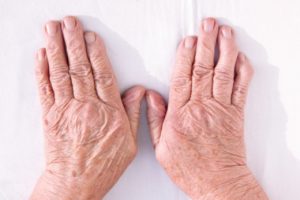
Rheumatoid nodule: Causes and treatment
Roughly 10 to 40 percent of patients will develop nodules, which can vary in size and are commonly found on the extensor surfaces (the skin on the opposite side of a joint). Nodules are quite common in rheumatoid arthritis patients, but some factors may increase one’s risk of developing them, such as testing positive for rheumatoid factor and smoking. Majority of nodules are asymptomatic, meaning, they do not require treatment, but for nodules that interfere with physical function, injections or surgical removal may be required.
Treatment for rheumatoid nodules is usually the same as for rheumatoid arthritis – DMARDs (disease-modifying anti-rheumatic drugs). These medications can help reduce the size of rheumatoid nodules, but if patients take methotrexate (a type of DMARD), nodules may actually grow in size. Some patients undergo steroid injections, but in cases where nodules become infected surgery may be required to remove them.
What causes rheumatoid vasculitis and how to treat it
Lower-extremity ulcers are less frequent than nodules and occur in up to nine percent of patients, but rates are decreasing, thanks to advancements in therapy. Ulcers that do develop in rheumatoid arthritis patients may be persistent and chronic, and many of them do not heal well even with proper treatment. Factors that contribute to ulcers in rheumatoid arthritis include poor blood supply, repeated pressure or trauma to the affected areas, and rheumatoid vasculitis.
Rheumatoid vasculitis – the inflammation of blood vessels – is a serious condition but it’s actually quite uncommon, with a rate of 0.1 to five percent. It usually occurs 10 to 15 years after disease diagnosis, and is seen in small and medium blood vessels. Symptoms include nail infarcts, nail bed papules, purple spots, rashes, and bruises. More serious complications of rheumatoid vasculitis include ulcers, necrotic lesions, and gangrene.
Rheumatoid vasculitis can be treated in a variety of ways depending on what organs are affected and the size of the blood vessel. In some cases, rheumatoid vasculitis may be treated by a pain-relieving cream. Other than that, there is not enough evidence to recommend a type of medication to treat rheumatoid vasculitis as there can be unwanted side effects.
There are other skin conditions that can affect rheumatoid arthritis patients, including pyoderma gangrenosum, Sweet’s syndrome, rheumatoid neutrophilic dermatosis (RND), subcorneal pustular dermatosis, and palisaded neutrophilic granulomatous dermatitis. These involve inflammatory lesions characterized by massive infiltration of neutrophils in the absence of infection. Lesions can range from asymptomatic and resolving on their own to eruptions accompanied by pain and fever.
Rheumatoid arthritis and medication side effects
There are medications to specifically treat skin complications in rheumatoid arthritis, such as methotrexate, non-biologic DMARDs (disease-modifying anti-rheumatic drugs) and tumor necrosis factor-α (TNF) inhibitors. Unfortunately, although these medications may treat skin complications, they also bring along side effects and other complications. For starters, the use of TNF inhibitors may be associated with the development of psoriasis, along with effects to the injection site, infusion reactions, skin infections, eczema, lupus, vasculitis, lichenoid drug eruptions, and granulomatous reactions.
Rheumatoid arthritis patients are also at a higher risk for skin cancer and TNF inhibitors may further increase this risk, but research is still pending on a definite conclusion.
Other side effects of medications include skin rashes, easy bruising, and sun sensitivity. Speak to your doctor about any side effects you may be experiencing while taking medications for rheumatoid arthritis.
Related: Rheumatoid arthritis remedies: Diet and exercise